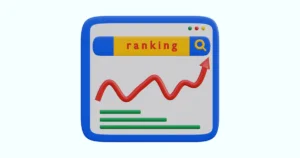How to design a website from scratch
Want to design a website but don’t know where to start? This guide is for you! In this article, you will learn how to design a website from scratch. Whether you want to showcase your portfolio, sell products, or share your expertise, having a well-designed and functional website is essential. In this comprehensive guide about how to design a website from scratch, we will walk you through the step-by-step process of designing a website from scratch, ensuring that you have all the necessary information to get started. Planning Your Website Before diving into the technical aspects of website creation, it’s essential to start with a solid plan. This initial step will help you define your website’s purpose, target audience, and key features. Here are some important considerations: Define Your Goals: Clearly articulate what you want to achieve with your website. Are you looking to attract more customers, establish your brand, or provide valuable information to your audience? Identify Your Target Audience: Understanding your target audience’s demographics, preferences, and needs will help you tailor your website accordingly. Choose a Suitable Platform: Selecting the right platform is crucial for your website’s success. Popular options include WordPress, Wix, and Squarespace. Consider their features, ease of use, and customization options. Create a Sitemap: A sitemap outlines the structure of your website and helps organize your content. It ensures smooth navigation for your visitors. Designing and Building Your Website Once you have a clear plan in place, it’s time to bring your vision to life. Here’s how you can design and build your website: Choose a Template or Theme: Select a visually appealing template or theme that aligns with your brand and goals. Ensure it is responsive and optimized for various devices. Customize Your Website: Personalize your website’s appearance by adding your logo, selecting suitable fonts and colors, and arranging your content in an intuitive manner. Craft Engaging Content: Compelling and relevant content is key to attracting and retaining visitors. Use persuasive language to clearly communicate your message and provide value to your audience. Optimize for Search Engines: Implement on-page SEO techniques such as using relevant keywords in your headings, titles, and meta tags. This will help search engines understand and rank your website better. Adding Functionality To make your website more functional and user-friendly, consider incorporating the following elements: Navigation Menu: Create a clear and easy-to-navigate menu structure that allows visitors to explore your website effortlessly. Contact Forms: Include a contact form to make it convenient for visitors to get in touch with you. Capture relevant information like name, email address, and message. Social Media Integration: Integrate social media buttons to encourage visitors to follow and share your content on various platforms. Mobile Optimization: Ensure your website is optimized for mobile devices, as an increasing number of users access the internet through smartphones and tablets. Testing and Launching Your Website Before launching your website to the world, take the time to thoroughly test its functionality and performance. Here’s what you should focus on: Proofread and Edit: Review your content for any spelling or grammatical errors. Ensure the language is clear, concise, and free of jargon. Test Compatibility: Check your website’s compatibility across different browsers (e.g., Chrome, Firefox, Safari) and devices (desktop, laptop, mobile). Page Load Speed: Optimize your website’s loading speed by compressing images, minimizing CSS and JavaScript files, and utilizing caching techniques. Responsive Design: Verify that your website adapts seamlessly to different screen sizes and resolutions. Once you are satisfied with the testing phase, it’s time to launch your website and share it with the world. Register a domain name, choose a reliable hosting provider, and make your website live. Maintaining and Updating Your Website Congratulations on creating your website! However, the work doesn’t end here. To ensure its continued success, you need to regularly maintain and update your website: Regular Backups: Back up your website’s files and database regularly to protect against data loss. Security Measures: Implement security measures such as SSL certificates, strong passwords, and regular software updates to safeguard your website from cyber threats. Analytics and Tracking: Monitor your website’s performance using tools like Google Analytics. Track visitor behavior, traffic sources, and popular content to make informed decisions. Fresh Content: Keep your website up to date by regularly adding new content, blog posts, or product updates. This will engage your audience and improve your search engine rankings. Conclusion how to build a website from scratch is a difficult question, but with careful planning, creativity, and attention to detail, you can achieve remarkable results. Remember to prioritize user experience, optimize for search engines, and continuously improve and update your website. Embrace the digital realm and establish your online presence today! Also, read Why my business needs a Website?
How to design a website from scratch Read More »


